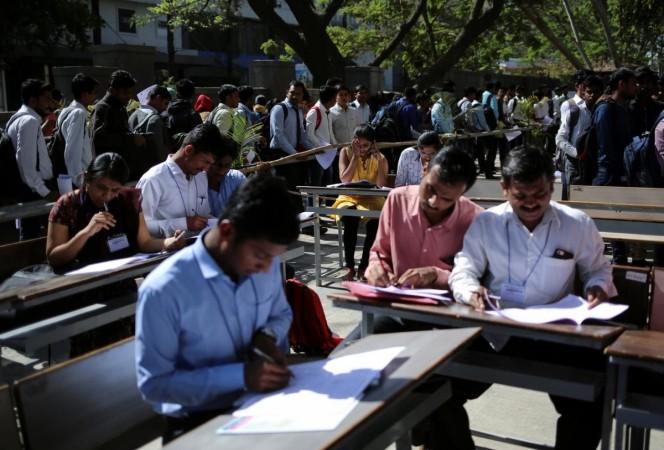
There aren't enough jobs around, then why aren't any of our leaders or the government ready to tackle the problem? Why is the spectre of jobless growth haunting Prime Minister Modi's aspirations? Did he forget so soon that this year as many as 130 million 1st-time voters—more than the population of Japan—went to polls? India's Gen Z, a key swing constituency in the 2019 elections has had one simple demand – more jobs, please! Is it too much to ask from a leader to stick to his promise of creating 10 million jobs a year -- a pledge, a key election promise that had won him the hearts of India's youth in the 2014 election and possibly his 2nd term as well?
As Narendra Modi took oath as India's Prime Minister for the second consecutive term, figures released by the Ministry of Statistics and Program Implementation pegged joblessness at 6.1%, of the total labour force during 2017-18, the highest in 45 years. Also, a survey by the National Statistic Office has revealed that unemployment in India has been directly proportional to literacy, people who have attained a secondary level of education or above. The higher the level of education, the more is the percentage of being unemployed. More than half of India's 1.3 billion population is under 25 and this poorly educated and mostly unskilled workforce is getting impatient and revengeful. How will India sustain?
China, on the other hand, registered 6.4% growth in the January-March 2019 quarter, thereby also dislodging India as the world's fastest major economy. In the 2020s, we are likely to overtake Germany and become the 4th largest economy, trailing only the United States, China, and Japan. The World Bank has predicted that the Indian economy will keep growing—at a remarkable 7.3% in 2019, but so will joblessness unless the Indian economy generates 10 million new jobs annually.
Where's The Gap?
With a demographic tailwind and massive developmental needs, why is India having trouble creating enough new jobs for its massive workforce that will generate enough wealth to broaden its middle class, accelerate India's economic development and pull millions out of poverty? Take this glaring example – In March we got a glimpse into just how dire the job market is in India. When the government announced 90,000 vacancies in the Indian Railways, the nation's biggest civilian employer, a staggering 28 million people applied! Nearly 1 in every 5 is unable to find a job. Where is India's demographic dividend?
A study commissioned by the government's think-tank showed that 7 million jobs were created in 2017- 18 — closer to the government's promise of providing 10 million jobs. How true are the numbers though? Narendra Modi who has been drawing appalling criticism over lack of job creation has briskly rejected allegations of rising unemployment and said crores of new jobs have been created in formal and unorganised sectors in his regimen. The leaked NSSO report has a completely different story! Why is there a complete lack of transparency regarding job data? Isn't the youth, an electorate in the world's largest democracy accountable to know what his government has done for him in terms of job creation? 31 million job seekers are still unemployed and the latest data shows that the situation is declining. According to the ILO report, the number of unemployed will increase to 18.9 million in 2019.
According to Modi, 1.25 crore opportunities were created in the hotel industry, 1.5 crore in tourism besides a large number of jobs that have been created by cab aggregators and through Mudra scheme. But, where are these millions of jobs? Has PM Modi's promise of "minimum government and maximum governance" which translates to efficiency and growth failed to deliver?

PM Modi had once himself said, "no-one has accurate data on jobs" referring to India's large informal economy which accounts for nearly 3/4th of the country's jobs. How could have any meaningful employment survey failed to capture this demographic? With more than 90% of India's workforce employed in the informal economy, the government has struggled to produce reliable jobs data to even get an accurate read on the level of joblessness in the country. This unemployment crisis is a political liability for Narendra Modi's fresh-out-of-the-oven government. No matter how much the government acknowledges the dire situation internally and in parliament sessions, why are they in a constant state of denial and cover-up in public?
The stage of development that India is in today, she should ideally be enjoying a demographically powered economic dividend. It's after all one of the youngest countries in the world with a median age of 28, as opposed to China's 37 and Japan's 47. Since 2014, the Modi government has come up with visionary schemes such as Make in India, Mudra Loan Scheme, Swach Bharat, Digital India, Skill India, and several others to enhance provide the lacklustre job sector with some impetus. Somehow, the impact of these initiatives has been more of a mirage than reality. While the government is gradually doing its bit to fulfil promises, demand is way beyond the current supply. This is a macroeconomic problem and the economy needs to revive.
The Road Ahead...
A young nation with a large digitally-enabled middle class, India is breaking new ground across all segments. But, we need more solutions that are rapid, solutions that will make us self-sustainable and resource-efficient. Opportunities, both at home and overseas are boundless, but we need to build on our capacities in order to achieve macroeconomic stability. The math is simple. If we forgo building our skills and capabilities that will drive innovation, India will stagnate. GDP is merely a number, a synonym for the economic resources available for people to consume, for the standard of living and thus choices that are available. A north-bound GDP is not enough to ensure the sustainable economic well-being of a nation or the health of its businesses.
We have to start thinking beyond sheer numbers. We have to think about transforming the way our economy truly creates value, address key societal needs and support a vibrant entrepreneurial sector thereby creating jobs. As the world increasingly confronts technological changes and sustainability challenges, I truly believe that India can offer an exemplar for other growth markets with the intellect, energy, and creativity of a young nation that it possesses. With concerted effort rapid, equitable and sustainable growth is achievable.
The stakes are already very high for the NDA in its second term. All we have to do is wait and watch!
[Dr. Somdutta Singh is an entrepreneur and former vice-chairperson of NASSCOM Product Council. The views and opinions expressed in this article are those of the author and do not reflect those of International Business Times, India]

















